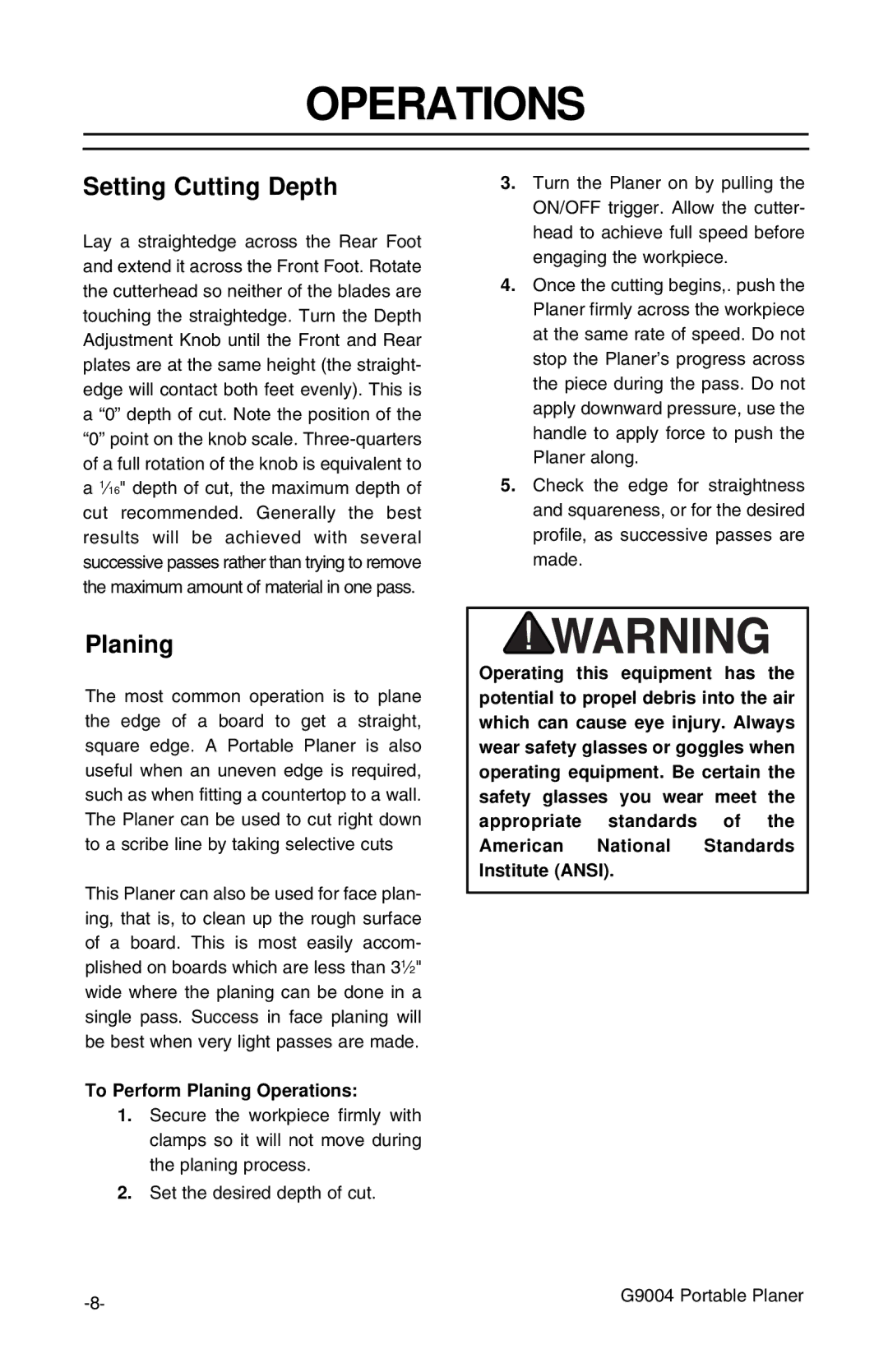
OPERATIONS
Setting Cutting Depth
Lay a straightedge across the Rear Foot and extend it across the Front Foot. Rotate the cutterhead so neither of the blades are touching the straightedge. Turn the Depth Adjustment Knob until the Front and Rear plates are at the same height (the straight- edge will contact both feet evenly). This is a “0” depth of cut. Note the position of the “0” point on the knob scale.
3.Turn the Planer on by pulling the ON/OFF trigger. Allow the cutter- head to achieve full speed before engaging the workpiece.
4.Once the cutting begins,. push the Planer firmly across the workpiece at the same rate of speed. Do not stop the Planer’s progress across the piece during the pass. Do not apply downward pressure, use the handle to apply force to push the Planer along.
5.Check the edge for straightness and squareness, or for the desired profile, as successive passes are made.
Planing
The most common operation is to plane the edge of a board to get a straight, square edge. A Portable Planer is also useful when an uneven edge is required, such as when fitting a countertop to a wall. The Planer can be used to cut right down to a scribe line by taking selective cuts
This Planer can also be used for face plan- ing, that is, to clean up the rough surface of a board. This is most easily accom- plished on boards which are less than 31⁄2" wide where the planing can be done in a single pass. Success in face planing will be best when very light passes are made.
To Perform Planing Operations:
1.Secure the workpiece firmly with clamps so it will not move during the planing process.
2.Set the desired depth of cut.
Operating this equipment has the potential to propel debris into the air which can cause eye injury. Always wear safety glasses or goggles when operating equipment. Be certain the safety glasses you wear meet the appropriate standards of the
American National Standards Institute (ANSI).
G9004 Portable Planer | |
|
